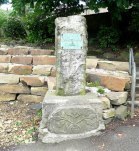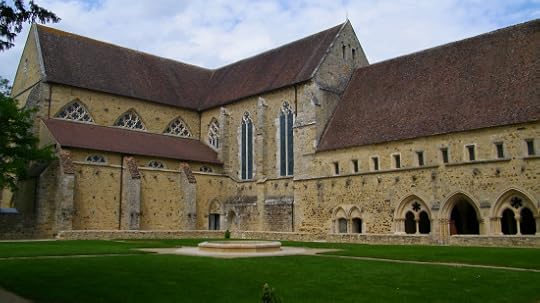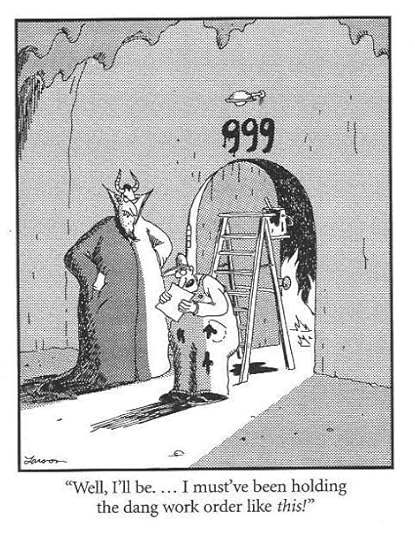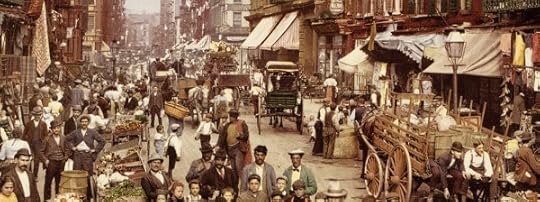Lenora Rogers's Blog, page 45
March 13, 2017
Medieval Stone Carving In Marsden Park, Marsden, West Yorkshire
 The Laycock Memorial in Marsden Park by Humphrey Bolton (Wikimedia)
The Laycock Memorial in Marsden Park by Humphrey Bolton (Wikimedia)
OS Grid Reference: SE 05080 11474. At the base of a memorial to the Lancashire poet Samuel Laycock in Marsden Park at Marsden, 8 miles southwest of Huddersfield, west Yorkshire, there is a curious carved stone, which has been called ‘Celtic’ by local historians down the years. It is strangely carved with elements of nature that do indeed seem to be “Celtic” in origin. However, the stone is...
The “Aha” Moments of 6 Industrious Women Inventors
March 6, 2017
Frances (Flint) Hamerstrom – Rich Girl to Wildlife Conservationist
When Frances (Flint) Hamerstrom was born in December 1908, her grandmothers fully expected that she would be presented at court. She was from a well to do family where servants and children were not regarded as people. Her childhood was filled with dancing lessons, horseback riding, travels to Europe and a domineering father and unhappy mother
View original post 614 more words


Living Descendants of the Native Americans of Agawam
by M. E. Lepionka 3/6/17.
Mary Ellen is a publisher, author, editor, textbook developer, and college instructor with a Master’s degree in anthropology from Boston University and post-graduate work at the University of British Columbia. In 2008 she retired to research the prehistory of Cape Ann and the Native Americans who lived here and to document artifacts from Cape Ann held in public and private collections. She is a member of the Massachusetts Archaeological Society....
Jane Wiedlin’s Excellent Adventure!
 If It Happened Yesterday, It's History
If It Happened Yesterday, It's History
Satan’s imps charge forth with obtuse tenacity
Those that believe in a hell often imagine it in myriad different ways.
Spend any time driving in traffic, shopping around the holidays or at the Department of Motor Vehicles and one becomes convinced of Sartre’s famous quip that “hell is other people.”
Along those lines, the question then arises, are there specific pockets of hell for the particularly nasty?
If so, those sentenced to such locales will be tormented by former homeowners’ association presidents and...
Museum of the City of New York Exhibition
Image credit: Mulberry Street, c. 1900 Photograph by Detroit Publishing Co. Museum of the City of New York, 90.12.2.215
What made New York New York? Follow the story of the city’s rise from a striving Dutch village to today’s “Capital of the World,” and consider its future in our changing world.Framed around the key themes of money, density, diversity, and creativity, N...
Cistercian Abbey of L’Epau
 Cistercian Abbey of L’Epau
Cistercian Abbey of L’Epau
The old Plantagenet town of LeMans rises high upon a pinnacle, with tiered houses in golden coloured stone, clinging for dear life, to the riverside hill. Part and part girdled by a 3rd century Roman wall, with richly decorative brickwork, displaying the Empire’s wealth.
 Berengaria of Navarre
Berengaria of Navarre
Berengaria of Navarre, daughter of Sancho VI, King of Navarre, was born in 1165, and married Richard the Lionheart in May of 1191 in Limassol, Cy...
February 27, 2017
Margaret More
Margaret Elizabeth More was born in Harlech on June 26th 1903, to parents William Henry More and Alice. She had much older siblings, Constance, Jack, Frank, Evelyn and eventually a younger brother, George. The family home was Crown Lodge, in Harlech on the rugged Welsh Coast. Margaret was a great deal younger than the next eldest sister Evelyn, and was undoubtedly an unplanned child. As the girls did not attend school, they instead had a governess, with whom Margaret studied music. Margaret...
Guest Post: Vikings to Virgin – The Hazards of Being a King by Trisha Hughes
 History... the interesting bits!
History... the interesting bits!
 Today it is a pleasure to welcome Trisha Hughes to the blog, with a guest post about her latest book, Vikings to Virgin – The Hazards of Being a King, which will be released on 28th February, 2017.
Today it is a pleasure to welcome Trisha Hughes to the blog, with a guest post about her latest book, Vikings to Virgin – The Hazards of Being a King, which will be released on 28th February, 2017.
When we think of Britain’s monarchs, most of us would agree that early periods of time are clearly muddled. Many are hidden in the mists of time while some have almost completely disappeared. What we do know is that there were kings who ruled for only a few months...














